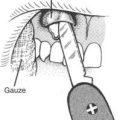BEFORE YOU GO
BE IN GOOD HEALTH
To the extent possible, be in good health. You can take a number of steps to accomplish this:
1. Maintain the proper weight for your height, age, and body type.
2. Exercise regularly. Be aware of your body’s condition. Build strength, flexibility, and endurance.
3. Eat a healthy diet and learn to love fruits, vegetables, and complex carbohydrates. Take a vitamin supplement and pay particular attention to ingesting sufficient amounts of calcium, iron, and other nutrients essential to metabolism, growth, and preservation of your eyesight, bones, and joints.
4. Complete proper screening examinations for treatable diseases such as breast, cervical, colon, testicular, and prostate cancer. Think about your heart and brain, and test at appropriate intervals for high-density lipoproteins, low-density lipoproteins, and total cholesterol. Maintain your blood pressure below a worrisome value.
5. If you are pregnant, do not take chances with your baby’s health.
6. Maintain all recommended immunizations against such diseases as tetanus and pertussis (whooping cough), and get a flu shot.
7. Wear your seat belt when driving; wear a helmet when riding a bicycle or motorcycle; and never attempt dangerous maneuvers if you are tired or intoxicated.
BE PREPARED
There is no substitute for preparedness. Adherence to this basic rule will prevent or ease the majority of mishaps that occur in the wild. Proper education before situations of risk allows you to cope in a purposeful fashion, rather than in a state of fear and panic. At least two, and preferably all, members of a wilderness expedition should understand first aid and medical rescue. On a casual family outing, at least one responsible adult should be skilled in first aid. Manual skills, such as mouth-to-mouth breathing, cardiopulmonary resuscitation (CPR), and the application of bandages and splints, should be practiced beforehand. Become familiar with technical rescue techniques pertinent to the environment you will be in (for example, high-angle rock, swift water, or avalanche-prone areas). Be certain to carry appropriate survival equipment, such as maps, a global positioning system (GPS) or compass, waterproof matches, a knife, nonperishable food, a flashlight, AvaLung in avalanche territory, and adequate first-aid supplies. Minimize the need for improvisation.
Before undertaking a trip where you will be far from formal medical assistance, it is wise to attend to any obvious medical problems. If you have not done so within the past 6 months, visit a dentist. Make certain that all of your immunizations are up to date (see page 449). If you have a significant medical problem, you should carry an information card, a MedicAlert bracelet or tag, or something similar.
A sexually active woman of childbearing age should have a test for early pregnancy detection before a wilderness expedition. Any pregnancy under 8 weeks’ gestation has a 25% chance of miscarriage. Furthermore, it might be sensible to confirm (usually by an ultrasound examination) that the fetus is properly situated within the uterus, and that there is not a risk for an ectopic (outside-the-uterus) pregnancy (see page 133), which could rupture and threaten the mother’s life.
COMMON SENSE
Many accidents occur because people ignore warning signs or don’t anticipate problems. Swimmers are stung by jellyfish outside protective net enclosures; nonswimmers drown while participating in hazardous whitewater rafting adventures. Pay heed to rangers, posted warnings, weather reports, and the experience of seasoned guides. Prepare for situations of risk by developing your skills in less challenging conditions. Wear recommended personal safety equipment, such as a flotation jacket, safety harness, or climbing helmet. Do not tolerate horseplay in dangerous settings.
COMMUNICATION
Prepare a trip plan (itinerary) and record it in a location (trailhead, ranger station, marina, or the like) where someone will recognize when a person or party is overdue and potentially lost or in trouble. Similarly, determine beforehand a plan for getting help in an emergency, whether it involves radio communication, ground-to-air or ship-to-shore signals, cellular telephone, or knowing the location of the nearest pay telephone, ranger station, or first-aid facility. If mobile rescue-grade equipment is to be used, it should be checked and double-checked before departure, and regularly scheduled communications should be prepared. At least two members of any expedition should be able to fashion standard ground-to-air distress markers. Make sure that children wear an item of bright clothing and carry a whistle that they know to blow if they are frightened or lost. If you carry a radio, know how to tune in to a weather information channel. The National Weather Service issues a “watch” when conditions are right for the development of a particular weather pattern, and a “warning” when its arrival is imminent.
If you will be traveling within an area with telephone or radio communication, whether at land or sea, carry precise instructions for persons to be able to communicate in an emergency. For instance, a diver should know how to contact the Divers Alert Network (www.diversalertnetwork.org) hotline. An expedition may wish to establish a relationship with an organization such as Global Rescue (www.globalrescue.com) for medical consultation or evacuation.
MEDICINES
There is no need to carry a drugstore on a day hike. On the other hand, drugs necessary to treat established medical problems (such as nitroglycerin tablets or spray for a person with angina) should always be on hand. It is the responsibility of the trip leader to be aware of any potential medical problems and to insist that people in obviously poor physical condition not undertake activities that might endanger themselves or others. Any person with allergies, diabetes, epilepsy, or special medical instructions should wear an identification bracelet or carry a medical information card. Anyone who takes medications should carry a list of drugs and doses. If you travel abroad, it is wise to carry an adequate supply of routine medications, as well as a note from a physician stating their necessity, should you be questioned or need refills. All people should receive adequate antitetanus and other locally required immunizations before the trip. Basic medical supplies are listed in Part Five.
FLUID REQUIREMENTS
Fluid requirements have been well worked out for all levels of exercise. They are highlighted again in the section on heat illness (see page 322). Most people underestimate their fluid requirements. Although there is variation, the following is a hydration requirement based on an average minimal recommendation of 2 to 3 liters of liquid per day for an adult man: minimal water loss—2,300 mL; water loss in hot environmental temperature—3,300 mL; and water loss during heavy exercise with significant sweating—6,600 mL. Other factors that increase fluid loss are activities at high altitude or in cold, dry air (increased loss during breathing), anything that increases sweating, and ingestion of drugs (e.g., alcohol or diuretics) that increase urinary losses.
Encourage frequent rest stops and water breaks. If natural sources of drinkable water (springs, wells, ice-melt runoff) will not be encountered, you should carry at least a 48-hour supply. Carry supplies for water disinfection (see page 433). Inspect your urine to be certain that it is light colored, rather than dark colored. Dark coloration usually indicates that you are not adequately hydrated.
DISASTER PREPAREDNESS
If there is a chance that you may be called on to assist during a disaster, it is important to be prepared. At a miminum, you should be prepared to be self-sufficient:
1. Be physically and emotionally fit.
2. Be vaccinated for any diseases endemic to the region in which you will be a rescuer.
3. Carry a kit that will allow you to survive for a few days. This kit should contain at least the following items:
“SIZING UP” THE SCENE
1. Don’t rush in until you have had an opportunity to look over everything—the physical setting, any obvious hazards, and the victim(s).
2. Don’t assume that you appreciate how sick or injured the victims are until you have had a chance to examine them or take a report from a reliable examiner.
4. Make an initial call for help as soon as you are able, and try to include as much information about your location, the conditions of the victims, and what you need (supplies, food, etc.) as possible.
5. Begin treatment and explain to the victims what you are doing.
6. Think about shelter and assign someone to that task.
7. Eliminate any physical dangers to the victims and rescuers.




